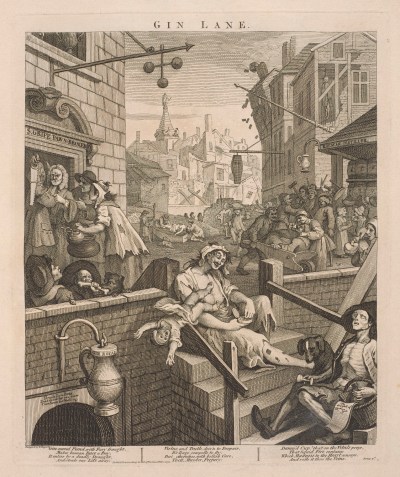
Unidentified (British?) artist and William Hogarth, A Life Class, Early 19th century?.
Oil on canvas. 987 mm x 1347 mm x 25 mm. © Photo: Royal Academy of Arts, London. Photographer: Prudence Cuming Associates Limited.
This image is not available to download. To licence this image for commercial purposes, contact our Picture Library at picturelibrary@royalacademy.org.uk
A Life Class, Early 19th century?
Unidentified (British?) artist and Formerly attributed to William Hogarth (1697 - 1764)
RA Collection: Art
This painting was purchased by the Royal Academy in 1885, at which time it was thought to be a depiction of the life class at the St. Martin's Lane Academy by William Hogarth. However, both the attribution and the identification have since been called into question with various experts pointing out discrepancies in the style of painting and also in the appearance of the life room which suggest that this painting is neither the work of Hogarth nor a depiction of the St Martin's Lane Academy. Most recently, Martin Postle has argued that, rather than being a wrongly attributed 18th-century painting, this is a deliberately conceived fake dating from the 19th century.
In 'The Artist's Model' exhibition catalogue (1991) and in a subsequent article, Postle discusses the various problematic features of this work, raising fundamental concerns over the style of the painting. He notes that while the figures on the right hand side resemble Hogarth's work, those on the left hand side are painted in a completely different style. He argues that as it was highly unlikely for either Hogarth or any other 18th-century artist to have produced a work featuring such disparate styles the painting is very probably a later 19th-century pastiche.
Postle explains that the original identification of the painting with Hogarth and the Saint Martin's Lane Academy stems from a description of the premises in the artist's Apology for Painters (c. 1760). Hogarth referred to a room big enough for thirty or forty people to draw the naked figure, equipped with 'a proper table', 'a large lamp', 'iron stove' and 'benches in a circular form'. However, while the life class depicted here appears to correspond to this description in a general sense, Postle points out that on closer inspection the table and circular benches are makeshift rather than 'proper' and are unlikely to be the prized equipment Hogarth inherited from Sir James Thornhill. Furthermore, the large lamp suspended from the ceiling is unconvincing as a functioning light source, being slung from the ceiling by a thin rope rather than attached by brackets and other fixings as shown in genuine depictions of 18th-century life classes. Other commentators have also suggested that the architecture of the room is unlikely to be English and that the fireplace and windows in particular suggest that this is a French or Italian building.
A red chalk drawing in the British Museum (1990-7-28-50) shows a similar composition and is evidently closely related to this work. However, the exact relationship between the two is not clear. Martin Postle suggests that these works are by different artists and that the later painting was based on this 18th-century drawing.
Object details
987 mm x 1347 mm x 25 mm
Associated works of art
1 results
Start exploring the RA Collection
- Explore art works, paint-smeared palettes, scribbled letters and more...
- Artists and architects have run the RA for 250 years.
Our Collection is a record of them.




